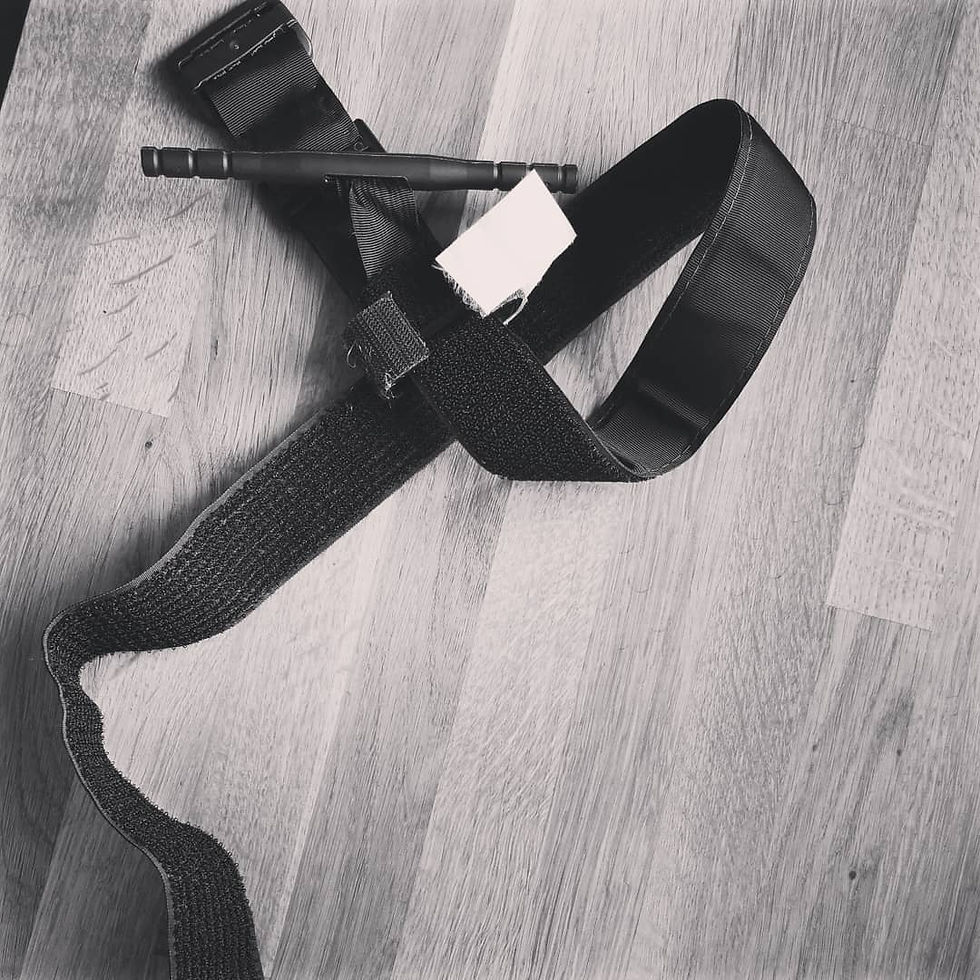The Combat Application Tourniquet (CAT)
- John @ Vanguard
- Mar 28, 2019
- 4 min read

9 years ago this summer, I spent 6 months of my life in Helmand Province, Afghanistan, attached to 1st Battalion The Mercian Regiment. Local lads, some of whom I'd attended school with, I had a particular affinity with this regiment compared to the other regiments I had had the pleasure to be attached to in my 12 years as a Mechanical Engineer in the British Army. The area in which we were deployed was a particularly busy part of the province and had seen plenty of violence and British Army units rotating through over the preceding 4 years, a fact that was not lost on the company. In the ensuing 6 months after the deployment, there would be plenty of IED's, shoots, mortars, heavy machine gun fire and ambushes, and I will certainly touch on that in subsequent blogs. However, today I am going to focus on one particular incident in which I witnessed first hand, the use of the Combat Application Tourniquet (CAT).
I had been acting as a member of the company's Fire Support Group (FSG) for the latter half of the tour, who's role was to either deploy on to high ground with heavy weapons in order to support the foot patrols, or act as a Quick Reaction Force in the event that patrols were engaged by Taliban or there was a medical emergency. Our Standard Operating Procedures (SOP's) at this stage were to wear the two CAT's that were issued to each soldier loosely on each leg. That way, should you become involved in an IED explosion, the bleeding could be stemmed fairly rapidly. On this particular day, we were sat in our Jackal vehicles inside the Forward Operating Base (FOB) with engines running while a foot patrol deployed out into the local village. We were sat with feet on dash boards just listening to the radio chatter as the patrol returned to base when we heard the unmistakable "CRUMP" of the IED detonating.

We heard the dreaded words over the radio net "CONTACT, IED, WAIT OUT!" Immediately the FSG Commander started to receive information about the location and details of the explosion as we were preparing the vehicles to drive straight to the site of the explosion. It emerged that one of the patrol had stepped out of the safe area (that had been swept by the detecting equipment) and had detonated a pressure pad IED that had been planted by the Taliban. We sped to the location of the platoon with stomachs churning and eyes wild, incessantly scanning around for secondary devices or the almost inevitable ambush that followed an IED strike. No one knew what sight we would be greeted with when we arrived at their location. Upon reaching the guys, we were met by the Platoon Sergeant who was closely followed by 6 of his platoon carrying the wounded man on a stretcher. I knew the guy who had stepped on the IED although not particularly well, but to the Platoon Sergeant this was like one of his own sons who was lying on that stretcher, such is the bond between an Infantry Platoon Sergeant and his men.
The unfortunate soldier had been thrown high into the air when the IED had detonated, which resulted in the catastrophic amputation of both of his legs mid-way up the Tibia and Fibula. Everything below that location was present but only attached by tissue and skin. Luckily, his platoon had been well trained in such an eventuality and, even before we had arrived in the vehicles, (all of 5 minutes journey time) the patrol medic had applied CAT's to each leg and given pain relief in the form of a Morphine auto injector. I remember vividly looking at this guy's injuries and noting that this was the most catastrophic injury I had witnessed and was ever likely to witness in my career so far, which had included a further tour of Afghanistan, one of Iraq and one of Northern Ireland. However, I was astonished by the lack of blood flow out of the wound. It was a mess obviously, but the blood was in smears on the stretcher material rather than pools. The CAT's were doing their job! All that was left for the FSG to do was to get the young soldier onto the back of the vehicle and proceed to a pre-determined Helicopter Landing Site (HLS) in the desert for the Heli Evac team (MERT) to collect him and take back to the Role 3 Medical Facility in Camp Bastion, some 10 minutes flight time away. That soldier would lose both legs just above the knees and be CASEVAC'd back to the UK in the days that followed. He now walks on state-of-the-art prosthetic limbs and lives a relatively normal life outside of the military. I can't help but wonder how it would have ended had he been present on the battlefield some 20 years previous to this incident. The likelihood is he would have bled out and died. That is why I tell this story often when I teach First Aid, the advancements made, particularly during conflict have led to a situation were even the most catastrophic injuries need not result in anyone losing their lives. My advice is to spend time teaching your students about the use of Tourniquets, they are a fantastic tool in the control of catastrophic haemorrhage and everyone should know their benefits and not be afraid of their use.


Comments